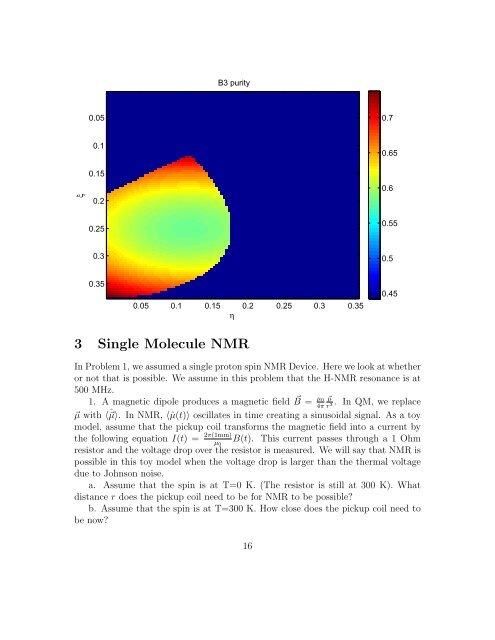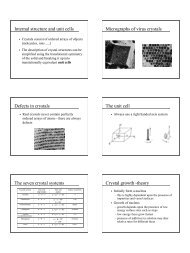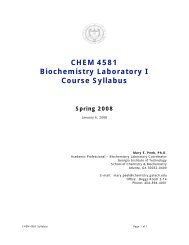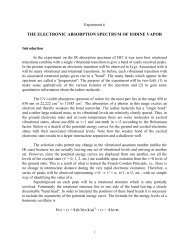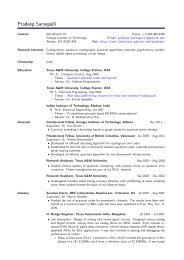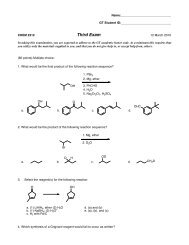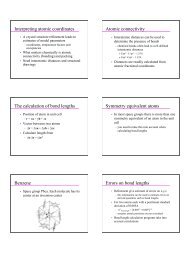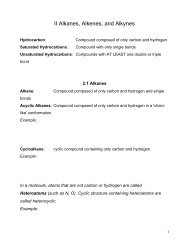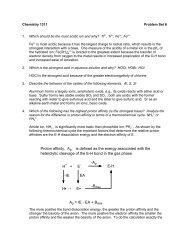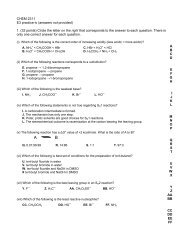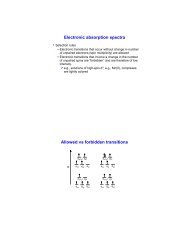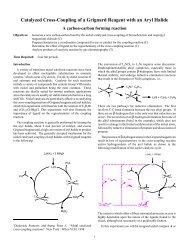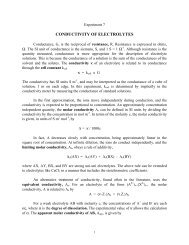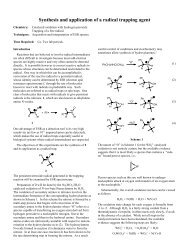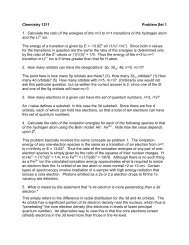Homework 1 Solutions
Homework 1 Solutions
Homework 1 Solutions
You also want an ePaper? Increase the reach of your titles
YUMPU automatically turns print PDFs into web optimized ePapers that Google loves.
B3 purity<br />
0.05<br />
0.7<br />
0.1<br />
0.65<br />
ξ<br />
0.15<br />
0.2<br />
0.6<br />
0.25<br />
0.55<br />
0.3<br />
0.5<br />
0.35<br />
0.05 0.1 0.15 0.2 0.25 0.3 0.35<br />
η<br />
0.45<br />
3 Single Molecule NMR<br />
In Problem 1, we assumed a single proton spin NMR Device. Here we look at whether<br />
or not that is possible. We assume in this problem that the H-NMR resonance is at<br />
500 MHz.<br />
1. A magnetic dipole produces a magnetic field B ⃗ = µ 0 ⃗µ<br />
. In QM, we replace<br />
4π r 3<br />
⃗µ with 〈ˆ⃗µ〉. In NMR, 〈ˆµ(t)〉 oscillates in time creating a sinusoidal signal. As a toy<br />
model, assume that the pickup coil transforms the magnetic field into a current by<br />
the following equation I(t) = 2π(1mm)<br />
µ 0<br />
B(t). This current passes through a 1 Ohm<br />
resistor and the voltage drop over the resistor is measured. We will say that NMR is<br />
possible in this toy model when the voltage drop is larger than the thermal voltage<br />
due to Johnson noise.<br />
a. Assume that the spin is at T=0 K. (The resistor is still at 300 K). What<br />
distance r does the pickup coil need to be for NMR to be possible<br />
b. Assume that the spin is at T=300 K. How close does the pickup coil need to<br />
be now<br />
16


